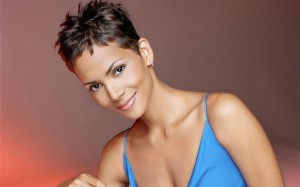Race and gender diversity ignored by Hollywood

Halle Berry: The exception that proves the rule
Despite strong evidence that reflecting cultural diversity is a sure fire formula for success, Hollywood’s film and television industry is dominated by white males, a new study has found.
The ‘2014 Hollywood Diversity Report’ says there is a disconnection between the industry’s professed focus on the bottom line and actual staffing practices in film, broadcast television and cable.
“While films and television shows with casts that reflect the nation’s racial and ethnic diversity were more likely to post high box office figures or rating during the study period, minorities and women were nonetheless under-represented among the corps of directors, show creators, writers and lead actors,” the study – produced by the Ralph J. Bunche Centre for African American Studies at UCLA – said.
“Moreover, the dominant agencies – important gatekeepers for film and television production process – tended to load their talent rosters with white male directors, show creators, writers and leads, largely to the exclusion of minority and female talent,” the report said.
The report examined 172 theatrical films released in 2011-12 and 1,061 television shows. The television shows were distributed across six broadcast and 62 cable channels and included comedies, dramas and reality shows.
It analysed lead actors’ race and gender, overall cast diversity, the race and gender of the show’s creator, show locations, writer diversity as well as the directors’ gender and race.
The report found minority groups under-represented by a factor of more than three to one in lead roles in film. Women were under-represented by a factor of two to one.
More than half of films had casts that were ten per cent minority group – or less and minorities were under-represented by a factor of five to one among film writers.
It also found minorities were under-represented by a factor of seven to one among lead roles on television.
“When confronted with abysmal diversity numbers, industry decision makers often resort to the ‘small pool’ argument as a justification for the situation: “There is a shortage of diverse talent out there,” report author Dr Darnell Hunt said.
“Meanwhile, the lack of diversity in how the industry celebrates excellence works to reinforce this idea. Behind the scenes, the decision makers responsible for the high-stakes productions that constitute Hollywood routinely surround themselves with people with whom they feel comfortable – people who think, and often look, like them.
“The combination of these factors creates a vicious cycle that virtually guarantees the marginalisation of diverse talent in the industry,” Dr Hunt said.
He said that women already constituted slightly more than half of the US population; more than a third of the population is a minority ethnic group and is continuing to diversify rapidly.
“For the first time in 2012 the majority of babies born in the US were non-white and by 2042 the nation’s white population will no longer constitute the majority,” Dr Hunt said.
“The bottom line for the Hollywood industry – theatrical, film, broadcast television and cable – would be advanced by implementing forward-looking project development and staffing practices that are in sync with these business changes,” he said.












